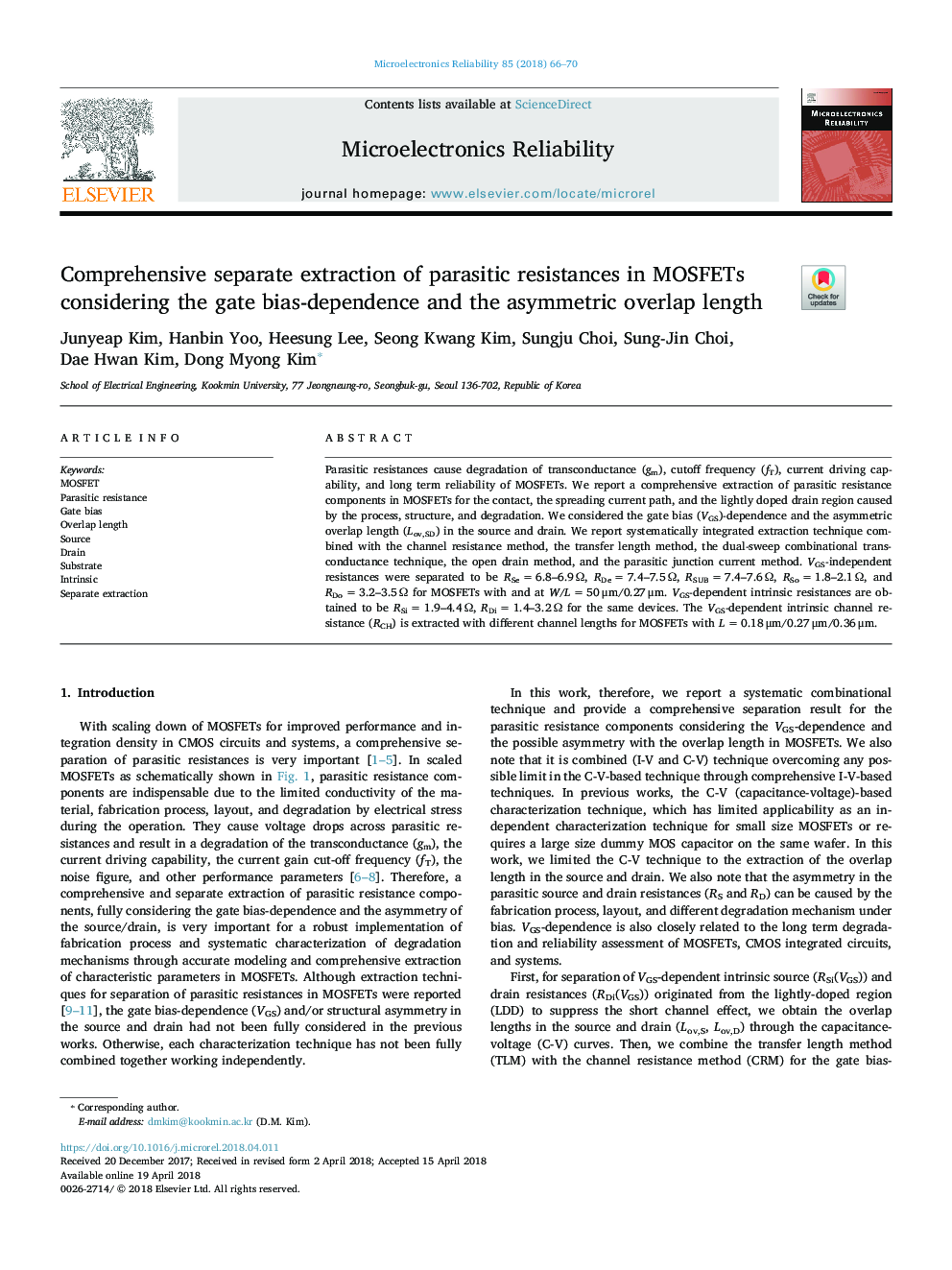| Article ID | Journal | Published Year | Pages | File Type |
|---|---|---|---|---|
| 6945513 | Microelectronics Reliability | 2018 | 5 Pages |
Abstract
Parasitic resistances cause degradation of transconductance (gm), cutoff frequency (fT), current driving capability, and long term reliability of MOSFETs. We report a comprehensive extraction of parasitic resistance components in MOSFETs for the contact, the spreading current path, and the lightly doped drain region caused by the process, structure, and degradation. We considered the gate bias (VGS)-dependence and the asymmetric overlap length (Lov,SD) in the source and drain. We report systematically integrated extraction technique combined with the channel resistance method, the transfer length method, the dual-sweep combinational transconductance technique, the open drain method, and the parasitic junction current method. VGS-independent resistances were separated to be RSeâ¯=â¯6.8-6.9â¯Î©, RDeâ¯=â¯7.4-7.5â¯Î©, RSUBâ¯=â¯7.4-7.6â¯Î©, RSoâ¯=â¯1.8-2.1â¯Î©, and RDoâ¯=â¯3.2-3.5â¯Î© for MOSFETs with and at W/Lâ¯=â¯50â¯Î¼m/0.27â¯Î¼m. VGS-dependent intrinsic resistances are obtained to be RSiâ¯=â¯1.9-4.4â¯Î©, RDiâ¯=â¯1.4-3.2â¯Î© for the same devices. The VGS-dependent intrinsic channel resistance (RCH) is extracted with different channel lengths for MOSFETs with Lâ¯=â¯0.18â¯Î¼m/0.27â¯Î¼m/0.36â¯Î¼m.
Related Topics
Physical Sciences and Engineering
Computer Science
Hardware and Architecture
Authors
Junyeap Kim, Hanbin Yoo, Heesung Lee, Seong Kwang Kim, Sungju Choi, Sung-Jin Choi, Dae Hwan Kim, Dong Myong Kim,
